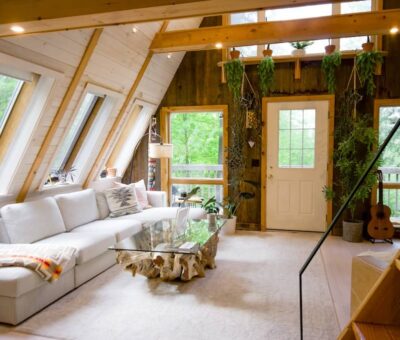
The Science-Backed Benefits of Interior Design for Well-being.
The spaces we spend time in affect more than just our comfort. They shape how we think, feel, and even connect with ourselves. Research shows that consciously designed environments can reduce stress, improve focus, and support emotional balance. When our outer surroundings align with our inner values and needs, we feel more grounded, authentic, and well.
Let’s explore how interior design for well-being can elevate everyday life—backed by both science and intentional choices.
1. The Power of Place Attachment
“Place attachment” refers to a psychological concept showing how our environment directly impacts our sense of comfort and belonging. Environmental psychologist Dr. Sally Augustin (2014) explains that spaces reflecting our personal preferences can reduce stress and elevate well-being. When we see elements of ourselves mirrored in our surroundings—whether at home, in the office, or favorite spaces—we feel more authentic and grounded.
The American Society of Interior Designers (2015) also found that spaces designed around individual values contribute to productivity and well-being. This research underscores that interior design for well-being not only improves mood but fosters a space for authentic expression.
2. The Role of Neuroscience in Environmental Impact
Neuroscientific research supports the idea that interior design for well-being can promote relaxation and satisfaction. Dr. Eve Edelstein (2013) explored how specific elements like lighting, color, and layout influence brain activity, directly impacting mood and well-being. Her studies show that when people occupy spaces that feel meaningful or comforting, their brain activity reflects greater relaxation and satisfaction, helping them connect more deeply with themselves.
3. Incorporate Nature to Boost Well-Being
Research by Terrapin Bright Green (2014) indicates that nature-connected interiors can reduce stress and promote calm. Integrating nature in your space not only supports mental clarity but also fosters a connection to yourself, adding a restorative layer to your environment.
4. Designing Spaces to Reflect Who We Want to Become
Designing spaces that reflect who we aspire to become taps into a powerful concept from self-affirmation theory (Steele, 1988), which emphasizes how surroundings shape how we view ourselves and our potential. Psychologist Dr. Ian Robertson (2015) explains that transforming our spaces to embody our aspirations positively impacts our confidence and motivation, allowing us to pursue goals with greater clarity and enthusiasm. When we apply interior design for well-being to create environments that reflect who we want to become, these spaces affirm our growth and help us manifest our fullest potential, both personally and professionally.
Piettolan Design Project: A Real-Life Example of Interior Design for Well-being
In The Piettolan Tila project, I began by exploring the client’s vision for her future self, shaping a space that would genuinely nurture her growth and aspirations. To bring the calming influence of nature indoors, we installed a breathtaking 6-meter forest wall, creating a living connection to the outdoors. Old doors were replaced with windowed ones to welcome natural light, enhancing flow between the interior and surrounding landscape. Every choice—from non-toxic, natural materials to thoughtfully curated textures—was made to reflect her values and create a sanctuary of calm, inspiration, and authenticity.
Heal with me for a sec.
If you’re ready to create a space that not only looks beautiful but also genuinely supports your mental clarity, emotional balance, and overall well-being, I’m here to guide you. Together, we can design an environment that reflects who you are and how you want to feel—calm, connected, and fully yourself.
References
- Augustin, S. (2014). The Science of Place Attachment and Well-Being. Insights from environmental psychology on how personal preferences in design influence mood and stress levels.
- American Society of Interior Designers (ASID) (2015). The Impact of Design on Well-being and Productivity. Findings on how personalized environments contribute to well-being and productivity.
- Edelstein, E. (2013). Neuroscience of Design: Lighting, Color, and Layout in Psychological Well-being. Research showing how specific environmental elements impact brain activity and relaxation.
- Terrapin Bright Green (2014). The Economics of Biophilia: Why Designing with Nature in Mind Makes Financial Sense. This study details the health and well-being benefits of biophilic design, which supports mental health and reduces stress.
- Steele, C. M. (1988). Self-Affirmation Theory: How Environments Reflect and Shape Our Identity. Steele’s work on how spaces can reinforce self-perception and drive.
Essi Koski-Lammi
Essi Koski-Lammi is a Wellbeing Trailblazer, Feminine Executive Coach, Healer, Clairvoyant and Conscious Interior Designer. She believes that how we live, work, and care for ourselves is deeply influenced by the connection between the spaces within and around us. With a diploma in interior design, over 22 years of experience in energy healing and meditation, MSC in Business and a strong background in global branding and marketing, Essi combines her expertise to empower women to transform their homes, businesses, and lives — and most importantly, themselves — so that every part of life feels aligned and truly their own.


You may also like

Create space for new by decluttering your home
April 11, 2025
How to make your home more beautiful and why it matters?
October 14, 2022
